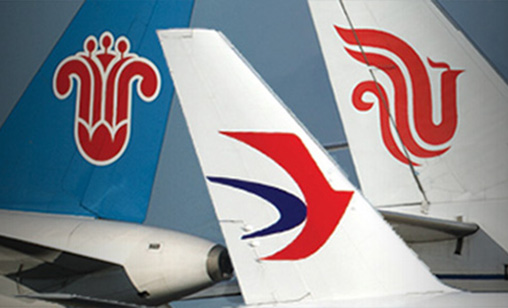Main Story
Bottom of the global recovery league
After a disappointing 2021, airlines hope next year will herald the beginning of the industry’s recovery from the pandemic. But in the Asia-Pacific, the collective airline wisdom is commercial airline passenger flying will fall far short of pre-crisis profit levels in 2022. Associate editor and chief correspondent, Tom Ballantyne, reports.
December 1st 2021
When the Association of Asia Pacific Airlines (AAPA) held a virtual media round table after its digital 65th Assembly of Presidents last month, the discussions were a stark reminder of how badly the region is performing compared with its airline peers in the rest of the world. Read More »
 |
 |
In simple terms, Assembly delegates were shown a graph of international air traffic in most world regions – North and South America, Europe, the Middle East and Africa. They were averaging around 40% of pre-crisis level international passengers. The Asia-Pacific’s international air traffic was at the bottom of the table at a dismal 6% of 2019 levels.
Just as concerning, the prognosis for a 2022 sustained recovery in the region appears bleak. Significant differences in reopening strategies among individual nations are hindering the reciprocal restart of air travel, AAPA director general, Subhas Menon, said.
A roadmap to the region’s reopening showed only a single country, Vietnam, is forecast to be open to all by the end of the second quarter of 2022. Next year, Malaysia, the Philippines, Singapore and Thailand are expected to be partially open, but only for fully vaccinated travellers from selected regions, although with no quarantine requirements. Australia, Indonesia, Japan and New Zealand are predicted to partially open but with quarantine requirements. Most worryingly, the region’s largest aviation market, Greater China, is expected to remain totally closed, except for essential travel, at least until the end of 2022.
The AAPA’s observations are “spot on” said International Air Transport Association (IATA) regional director Asia-Pacific, Philip Goh. “You look at the other major regions and we are kind of envious they are on the way to quite good levels of recovery. In this region, too many [countries] remain closed and there are some quite risk-averse authorities and governments. Plus, the vaccination rates have not gone up. It’s a bit patchy,” he said.
“Some parts of the Asia-Pacific are struggling with 40% [vaccination rate] so it will take a while before they return to a more comfortable level. But when they get there, I have no doubt it will quite quickly open up.”
IATA’s expectations for 2022? “Overall, domestic recovery will be strong,” Goh said. “We expect domestic will be very close to 2019 levels. We are less optimistic about international. IATA estimates international travel will recover globally to somewhere around 44% of 2019 levels. Obviously, some regions will lead and others will be behind. We think the Asia-Pacific will be behind. Even if we see an uptake, it will be later in the year. By the end of 2022, the Asia-Pacific will be looking at international 70% below 2019 levels.”
Goh told Orient Aviation there will be a slow start to 2022 and hopefully a ramping up in the second half of the year. “So much depends on what governments do from here on. For me, the next six months is critical,” he said. “Number one, we are desperately trying to persuade all governments to communicate a roadmap to reopening. Half of the countries in the key markets of the Asia-Pacific have published roadmaps.
“That’s a good sign. It means airlines can plan ahead expecting they will see a progressive opening. But the other half of the key markets, meaning the top 11 or 12 markets in this region, have not come away with a clear roadmap to reopening. If they don’t start to do this soon, hopefully in the next three months, then how do we plan? Airlines have a long planning time.” Overall, Goh said it is unlikely there will be a full recovery in the region’s international markets until late 2023 or even early 2024.
“Many communities in the region are dependent on aviation as an essential means of transportation and source of livelihood,” Menon said. “The AAPA applauds the efforts of governments to accelerate vaccination of their populations and gradually ease travel restrictions. It is hoped quarantine requirements will be progressively lifted, with air travel made accessible to a wider segment of the population, such as those who have recovered from COVID infections. Additionally, the risk of onboard transmission is widely accepted as being very low.
“Vaccination levels are still low in some countries due to shortages of supplies and resources. Nevertheless, we should build on the resilience of aviation to gradually restore international air services as soon as possible,” Menon said.
 |
While it appears 2022 may heap even more pain on the region’s airlines, longer term prospects are far brighter. In early November, Boeing and Airbus released long-term market outlooks at the Dubai Airshow, the first major airshow to be go ahead since the outbreak of the pandemic. Boeing estimated the Asia-Pacific will require 17,645 new aircraft over the next two decades at a market value of $3.1 trillion, slightly higher than the company’s 2019 forecast. Added to this forecast is an aftermarket services sector calculated at $3.7 trillion. The new forecast said the Asia-Pacific’s total aviation market value to 2040 will be $6.8 trillion as it expands to account for almost half of global traffic by that date.
“We have seen strong resilience in Asia-Pacific traffic when restrictions are lifted and passengers feel confident about travel,” said Boeing vice president commercial marketing, Darren Hulst. “Carriers with efficient and versatile fleets will be positioned to meet passenger needs and air freight demand with airplanes that reduce fuel use, emissions and operating costs.”
Airbus believes growth will be driven by the accelerated retirement of older, less fuel-efficient aircraft resulting in a need for some 39,000 new build passenger and freighter aircraft, of which 15,250 will be for replacement. “As a consequence, by 2040 the vast majority of commercial aircraft in operation will be of the latest generation, up from some 13% today, considerably improving the CO2 efficiency of the world’s commercial aircraft fleets,” Airbus said.
At the buzzy Dubai show, there was evidence airlines are turning their minds to new orders. Airbus was the star performer, winning orders and commitments for 408 aircraft (269 firm orders and 139 commitments), including a first commitment for the A350F freighter derivative.
Boeing never caught up, announcing 78 orders at the UAE show.
As for the Asia-Pacific’s critical Chinese market, there may be some hope for an earlier opening than previously anticipated. A HSBC global research report, released last month, reported more improvement in domestic traffic, up to 77% of 2019 levels in October, from 73% in September.
“We expect the domestic market to ramp up swiftly once the COVID-19 situation is controlled: We are optimistic that pent-up demand for travel will quickly bounce back once the pandemic subsides, supporting the recovery of the domestic market,” said the HSBC report.
It added the “Big Three” airlines – Air China, China Southern and China Eastern – are best positioned to grow from the gradual reopening of international travel.
“Pharmaceutical companies continue to make progress in antiviral pills. New studies show Pfizer’s pill slashes the risk of severe COVID-19 by 89%. Plus, with ongoing vaccinations around the world, we expect a quicker reopening of international travel may allow the “Big Three” airlines to redeploy their excess capacity from domestic routes to the international market, ease over-capacity issues in domestic routes and improve profitability.
“Moreover, given their well-capitalized balance sheets, solid operating cash flows supported by a strong domestic market and the weakening positioning of their industry peers, particularly on international routes, the three majors will emerge stronger post the pandemic, in our view.”
China’s leading carriers do not expect Mainland borders to open until March next year, after the Beijing Winter Olympic and Paralympic games, HSBC said.
Angie Bauer says:
October 11th 2025 12:44pm